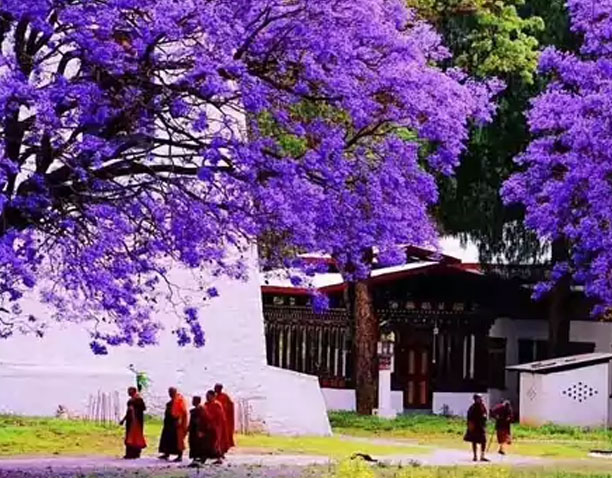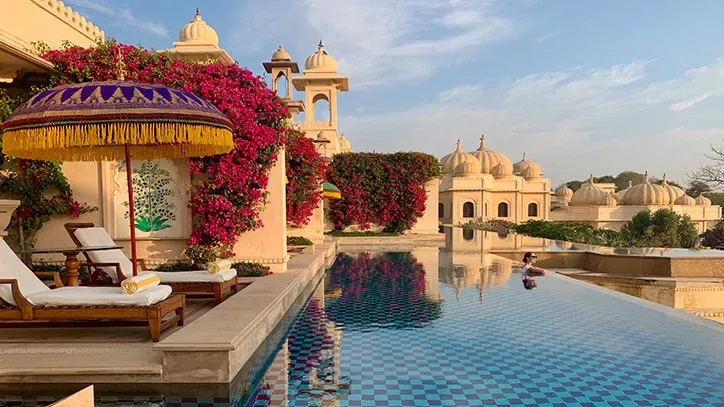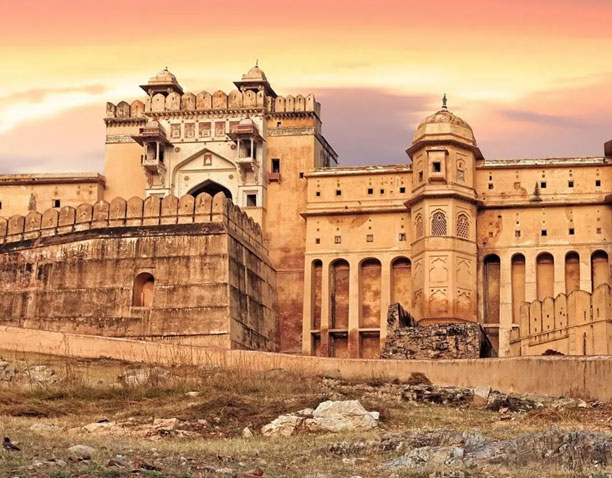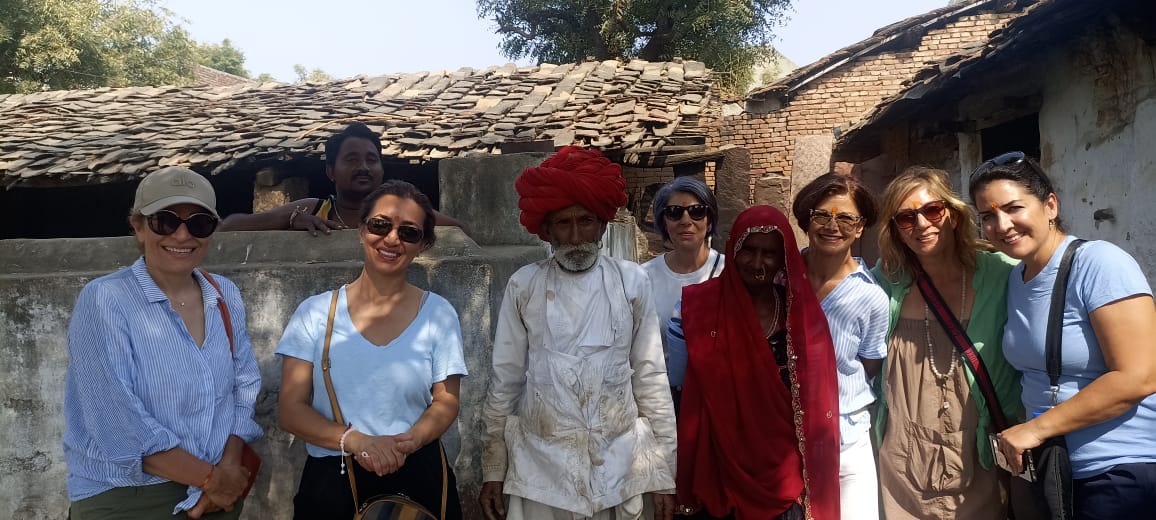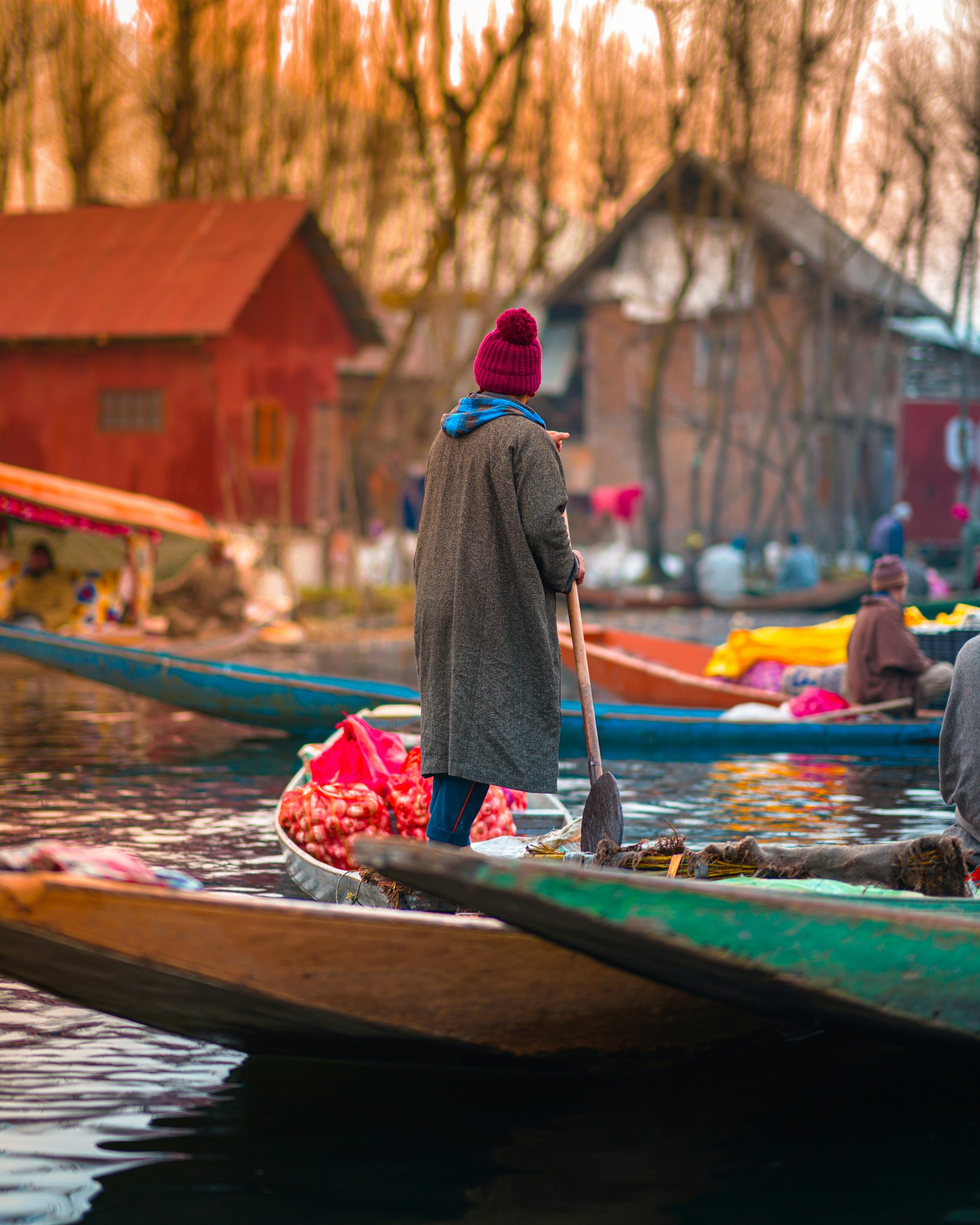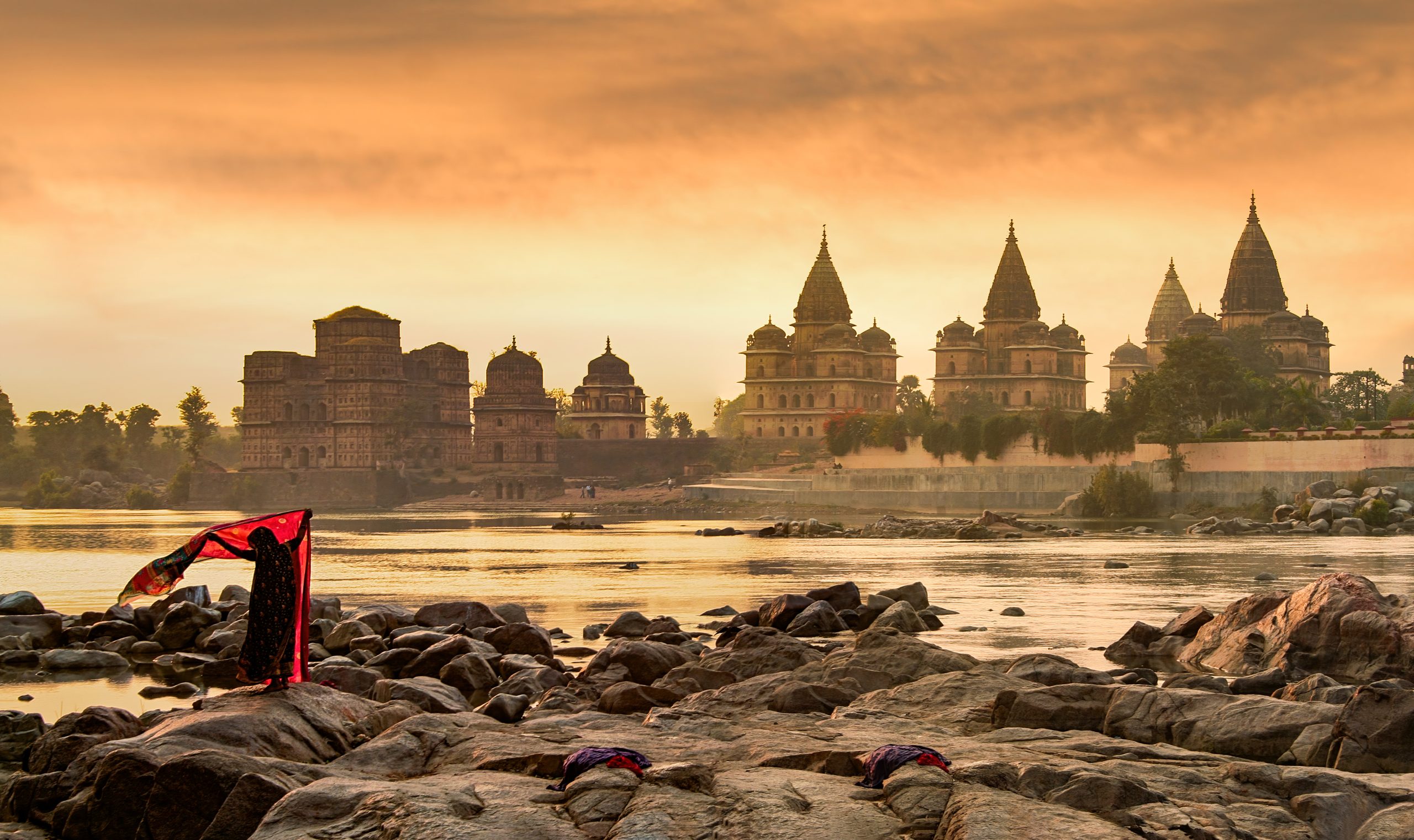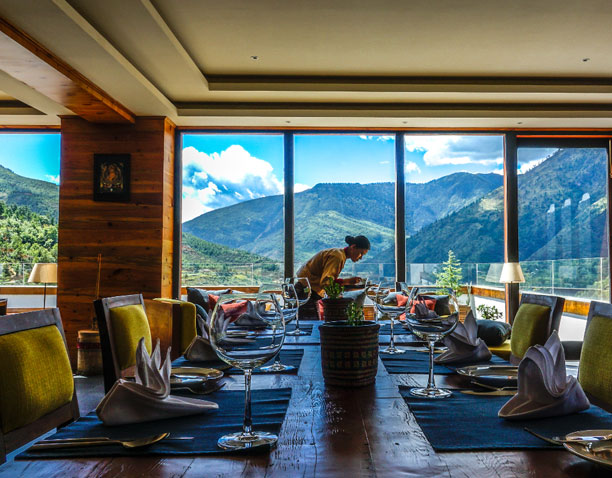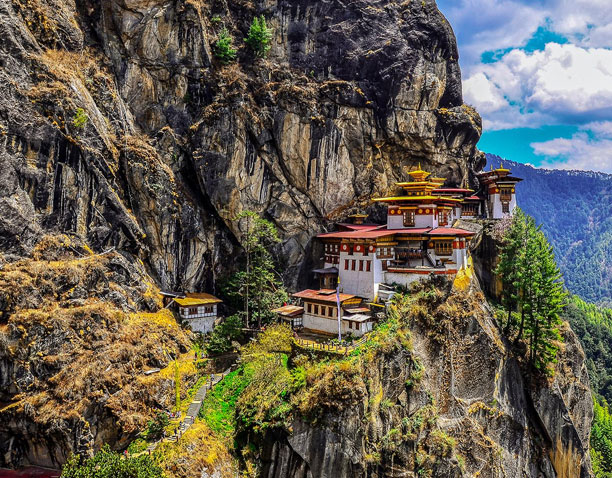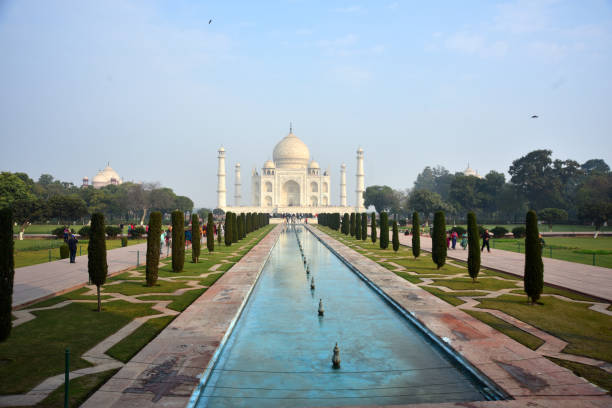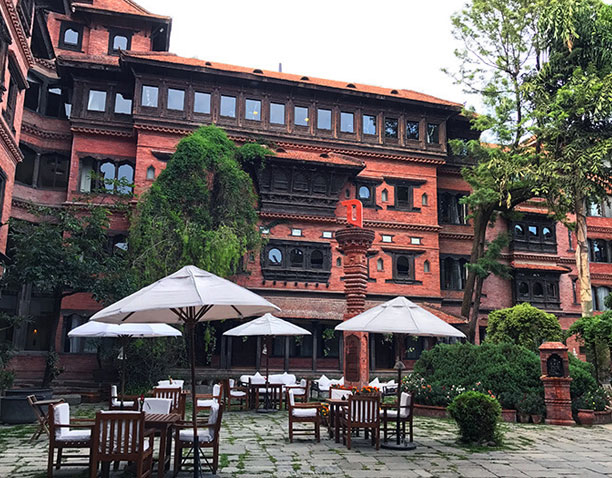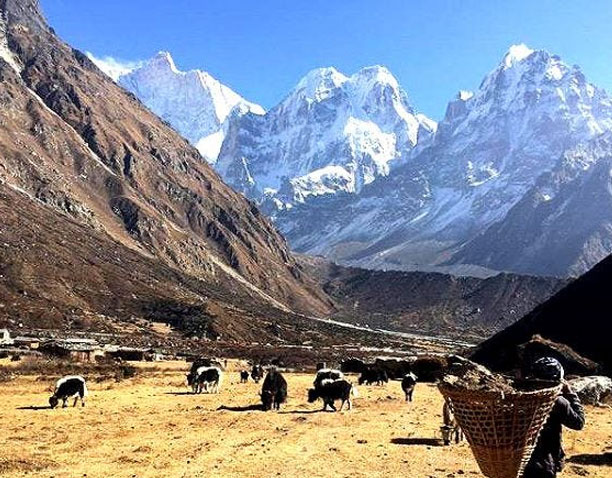Many USA guest “vacationers” embark on Bhutan tours from India, drawn to the only country that shares a border with India, to immerse themselves in its rich culture. This eastern Himalayan kingdom, also known as the ‘discover Bhutan’ destination, is a mythical paradise, boasting stunning snow-capped mountains, lush terrains of the eastern Himalayas, and beautiful villages.
For those who have never been to Bhutan before, starting out may be difficult. The nation’s tourism culture of “high-value, low-impact” necessitates that individuals plan their journey carefully since there are restrictions on the number of individuals who can enter the country at one time.
In this blog post, we’ll be looking at the optimal time of year to book your Bhutan holiday packages. We will explore the best seasons and months to journey to the country, the places you can explore with travel packages for Bhutan, and the climate to expect. To help you decide on the right time for you, we have created a table at the end of the article that summarises this information. So, keep reading to find out when the best time to travel to Bhutan is!
What Is The Optimal Time Of Year To Tour Bhutan When Coming From USA?
Many travellers on Bhutan tours have expressed that October is the most ideal month to visit Bhutan, as nearly three-fourths of its international travellers come during this time. Both the Spring (March to May) and the Autumn (September to November) seasons are also considered prime times for a tour to Bhutan.
Most international travellers find Spring and Autumn particularly favourable for a Bhutan tour due to the mild temperatures, drier weather, fresh air, and sunny skies. During these seasons, the country also hosts multiple festivals such as the Paro and Punakha Tshechu in Spring and the Thimphu Tshechu, the country’s biggest festival, held in the capital in Autumn, making tours to Bhutan even more exciting.
In the following, we provide a brief overview of the ideal time for travelling to Bhutan depending on the type of vacation one is looking for:
October is widely known as the best month to plan your Bhutan trips. To ensure you can take advantage of this, it is recommended to book tickets at least 3 months in advance for your Bhutan trip, as there is a limit on the number of travelers allowed in at one time.
If you desire to benefit from the great climate but avoid large groups, we suggest that you come during May or November.
If you’re looking to save money on your trips to Bhutan, June and December are the most cost-efficient times to go. You can benefit from off-season pricing while still enjoying decent weather.
If you are looking to delve into Bhutan’s cultural attractions, like painting, carpentry, weaving, and papermaking or absorb the local philosophy in this Buddhist kingdom, any season can be suitable, even the wet season.
Travelers can take advantage of the lowest rates and greatest value for their money by visiting during the offseason.
Optimal Times to Tour Bhutan
Travel Bhutan to explore a unique culture and breathtaking scenery. For those looking to plan a trip, the best months to visit are generally considered to be March, April, May, September, October, and November. These months offer the most pleasant temperatures and the clearest skies, perfect for trekking and sightseeing.
Because of its geographical location, the climate of Bhutan is distinctive, impacted by the heights and landscapes. It also offers great diversity with four seasons: spring, summer, fall and winter.
It is advised to go to Bhutan during spring or autumn, with winter and summer coming in as second choices. Here is a further account of every season.
The months of March, April, and May are known as Spring.
For those who appreciate the beauty of nature, Spring is a great time to explore the local vegetation of the country. Mild temperatures, which usually hover around 16°C in the lower elevations, and the snowmelt provide a stunning landscape of wildflowers that blanket the hills.
The temperature in the mountain areas stays consistently chill, usually at or below 3°C. However, the dry climate and lack of precipitation provide stunning views of the Himalayas from higher altitudes.
Visiting Bhutan in the springtime is optimal for taking part in popular treks.
Months | March, April, May
Suggested Activities | Witnessing the Jacaranda blooms at Punakha Dzong in mid-May, and embarking on Jomolhari Trek and Drukpath Trek from mid-April to the end of May with local guides.
Festivals | Gomkora Festival in Trashigang in April (lasting 3 days), Paro Tsechu in April (5 days), and Ura Yakchoe at Bumthang’s Ura Valley in May
Additional Information | The Paro Tsechu is an excellent opportunity to meet the King of Bhutan, and he usually joins the festivities between the 3rd and final days. It is a well-known festival, and Paro will be bustling with tourists. Hotel rooms and services may be overwhelmed, so it is best to book ahead for better hotels and guides.
The Summer Months: June, July, August, and into Mid-September
Starting in mid-April and running until mid-September, Bhutan enjoys its summer season. This is also the time of year when the country has its yearly monsoon from India, so travelers should be sure to bring a raincoat.
Beginning around late June, the heaviest amount of rainfall typically occurs in the South. This can cause a danger of flash floods, which can disrupt domestic flights, affect rural areas, and impede road travel. It is important to be mindful of this if you are travelling in this region of the nation.
This season, the country is not always blanketed in storm clouds. Generally, rain happens in the afternoons and evenings at most every two or three days, leaving your mornings open for exploration. Plus, rainy days can be the ideal time for a spa getaway.
In the valleys, temperatures usually range between 24°C and 25°C; however, in the eastern parts, the temperature can reach up to 31.5°C. In the capital city, Thimphu, the highest temperatures are typically around 26°C.
Months | June, July, August, and mid-September
Recommended Activities | The Drukair Annual Golf Tournament takes place in mid-August while Kurjey Tshechu, celebrated at the end of June, honors significant holy sites of Guru Rinpoche.
Festivals | Nimalung Tshechu is held in June at Bumthang’s Chokhor valley, and the Haa Summer Festival
Additional Information | Despite being labeled “monsoon”, Bhutan does not experience the torrential rain that other South Asian countries do. The rain is quite light and should not disrupt visitors’ itineraries.
The months of September, October, and November are generally referred to as the Autumn or Fall season.
The peak season for tourists to visit Bhutan from USA is autumn, when the weather is cool and mild following the rainy season. This makes autumn an ideal time to enjoy treks and hikes, and it’s also the perfect time for a Bhutan luxury tour. September temperatures average around 25°C and can drop to 10°C by November in the valley areas.
The temperatures in the mountainous areas can become very cold, particularly by late November. A great time to visit Bhutan is during the season of Autumn, as they host many of their festivities then.
Months | September, October, November
Recommended Activities | Trekking in Bhutan from October to November, as well as adventure sports and other outdoor activities are all part of the Bhutan luxury tours.
Festivals | Thimphu Tshechu in Thimphu, Black-Necked Crane Festival in Phobjikha Valley, Wangdi Tshechu in Wangdue Phodrang, Jambay Lhakhang Drup at Jambay Lhakhang Temple in Bumthang, and Prakar Tshechu in Bumthang
Additional Information | Due to the popularity of the Paro Teshcu, it is recommended to pre-book your accommodations and activities before visiting, as hotels and services in Thimphu may be fully booked during this time.
*The months of the winter season include December, January, and February._
From December to February, Bhutan experiences its coldest temperatures, with Paro, Thimphu, and Bumthang having readings of 0°C. The mountainous regions are especially cold, with snow being a constant. January is the chilliest of the months, with snowfall occurring in Paro and Thimphu.
Nevertheless, temperatures in the valleys will not drop below zero and remain bright and sunny with pristine clear skies. This is an opportune time to observe Bhutan’s exquisite black-necked cranes as they migrate from the Phobjikha Valley.
Months | December, January, February
Activities to Consider |
* Seeing Punakha Dzong
* Exploring Paro Taktsang (Tiger’s Nest Monastery
* Visiting Gangtey
* Going Hiking
Festivals |
* Punakha Drubchen festival (lasting 5 days)
* Trongsa Tshechu (3 day celebration) held in Trongsa Dzong.
* Nomad Festival in Bumthang (February)
Additional Information | Heavy snowfall might cause some roads in eastern and central Bhutan to be blocked or impassable.
A Great Time of Year to Tour Bhutan
Visiting Bhutan is an unforgettable experience that should be on everyone’s bucket list. It is a small country with an ancient culture, fascinating landscape, and friendly people. The question is when is the best time to go? The answer is that the best season for tours to Bhutan is spring, which runs from March to May.
A Perfect Time to See Bhutan
Everyone should add touring Bhutan to their bucket list – the small nation is filled with an ancient culture, beautiful terrain, and welcoming locals. When is the ideal time to go? Spring, from March to May, is the most suitable season for tours to Bhutan.
The optimal times for tours to Bhutan are between March and May, and from September to November.
When the peak season rolls around, there are plenty of festivals to anticipate and it is the ideal time to travel to Bhutan if you want to experience all the country has to offer.
At this time, the area can be quite busy with all of the hotels and services being completely filled. It is important to make arrangements and reserve accommodations and other services well in advance.
In Bhutan, there are two recognized offseason periods: from June to August and from December to February. These months coincide with the country’s rainy season.
For those who would like to avoid the throng of people and benefit from lower travel costs, the ideal time to visit Bhutan is during the rainy season or winter. During the months of January, February, June, July, August, and December, the minimum daily package cost is typically $200, as opposed to the usual price of $250 during the peak seasons.
If you are travelling in the winter (December to February), it is best to wear multiple layers of clothing. Additionally, for your trip during Bhutan’s rainy season (June to August), it would be wise to bring a raincoat and an umbrella.
Wintertime is an excellent season for exploring Bhutan due to the mild, sunny weather. There are still plenty of festivities to partake in, and hiking is a great activity to enjoy in such pleasant conditions.
No matter where you are staying in Bhutan, it is important to keep in mind that the weather can vary in accordance with the altitude. Therefore, it is wise to always carry a jacket and sunglasses, as the sunlight can be particularly intense during hikes.
For those who would like to avoid the expense and chilliness, a trip to Bhutan in early June is suggested. During the rainy season, which is best for indoor activities, it’s an ideal time to plan cultural trips – with many museum visits perhaps, or a luxurious spa retreat.
October Month Getaway Ideas in Bhutan
Are you looking for the best Bhutan tour packages for a great place to visit in October? Bhutan is a great option! Here are some of the top places to explore while in Bhutan during the month of October.
Events To Attend In October | Places To Visit In Bhutan In October | Trekking Choices Available In October
Thimphu Tshechu, located in Thimphu | Tour Lhuentse and Mongar | Punakha Winter Trek
Jomolhari Mountain Festival, based in Paro District at the foot of Mt. Jomolhari | View Rinpung Dzong in Paro | Embark on the Jomolhari Trek
Head To Chele La in Paro | Trek Druk Path
Attend the Thangbi Mani Festival in Chhoekhor Gewog in Bumthang | Visit the Amo Chuu Crocodile Breeding Center in Phuentsholing | Go on the Bumthang Owl Trek
Jambay Lhakhang Drup Tsechu in Bumthang | Pema Lingpa in Bumthang
Gangtey Tsechu in the Gangtey Goenpa monastery in Phobjikha Valley, near the Gangtey Lodge | Stop At Gangtey Monastery in Phobjikha Valley | Take the Phobjikha Valley Trek
Go To the Wangdue Tsechu in Wangduephodrang | Check Out Wangduephodrang Dzong | Venture on the Thousand Lakes Trek
Experience the Royal Highlander Festival in Laya, Gasa | Explore the Haa Valley | Conquer the Snowman Trek
If you’re interested in trekking in Bhutan, October is the perfect time to go since the weather is perfect for mountain walks and sleeping in teahouses. However, you should make sure to get your permit early, as trekking season only extends until the end of November.
October is an excellent time to explore Bhutan, with many popular destinations including Bumthang, Wangdue Phodrang, Gelephu, Trashigang, and Trongsa. For the best experience of this beautiful country, consider visiting one of the following towns:
Thimphu: Every October, this capital city of the nation holds the Thimphu festival. It is an excellent destination for purchasing handcrafted items and puts on lots of trade fairs and exhibitions. Nevertheless, the acquisition of antiques is not permitted and can lead to serious repercussions if caught.
Paro: October is the perfect time to visit this region and take part in activities like trekking, water sports, and more. Two of the most popular places to check out are Rinpung Dzong Monastery and Chele La. There is also a wealth of culture and vibrant festivals to explore in this area.
It is recommended that you organize your journey ahead of time to avoid high prices since Paro is the only urban area that has an international airport.
Taking a Look at When It’s Ideal to Visit Bhutan
The climate, best time, and cost per night per person for each season in Bhutan are as follows:
Season | Months | Climate | Best For | Cost Per Night Per Person
Peak Season | March to May | Spring | Spring/Autumn Festivals, Trekking, and Other Outdoor Activities | $250 (Approx. ₹20,527)
September to November | Autumn/Fall | Off-Season | Sightseeing, Indoor Activities/Spa Retreats, Budget Trips, and Winter/Summer Festivals | $200 (Approx. ₹16,421)
December to February | Winter |
The peak season in Bhutan is from March to May, which has a spring climate, and is best for spring and autumn festivals, trekking, and other outdoor activities. It costs approximately $250 (₹20,527) per night per person. From September to November, which is the off-season, the climate is autumn/fall, and it is best for sightseeing, indoor activities/spa retreats, budget trips, and winter/summer festivals. This costs approximately $200 (₹16,421) per night per person. The winter season is from December to February.
Exploring Bhutan through luxury tours Bhutan yields breathtaking valleys, a panoramic view of the Himalayas, archaic monasteries, vibrant festivals and unforgettable trekking and hiking paths. No matter the season, whether it be during the festival peak or in the off-season for the budget traveler, one will surely enjoy their journey. In short, any time is an excellent time to take a trip to Bhutan!
Commonly Asked Questions
What is the best way to travel to Bhutan from USA / India?
Getting to butan from USA the most common route would be by air is, from New York( JFK International Airport) to New Delhi India, or to Bangkok, Thailand. Now Bhutan flights are connected to Singapore thrice a week which also makes non-stop flights from the USA to Bhutan. From India is possible through air, rail, or road travel.
The quickest way to get to Paro International Airport is by air, however, it is also the priciest option. A single flight from Delhi starts at ₹11,000 while an economy flight from Bagdogra can cost around ₹5,500.
The most economical way to get to Bhutan is undoubtedly by train and Hasimara, in West Bengal, is the railway station closest to Jaigaon, the Indian city on the Indo-Bhutan frontier. Regular services to Hasimara depart from Delhi, Kolkata, and Kanpur with little need for changes and connections.
To drive to Bhutan, you have to secure a permit, which you can get from the Regional Transport Office in Phuentsholing, when you have passed the border. It will cost you ₹200.
The Royal Bhutanese Government has established a daily bus route from Kolkata to Phuentsholing, taking approximately 18 hours for the journey.
Is it necessary for USA nationals to obtain a visa in order to visit Bhutan?
All visitors, including those on official U.S. government business, must obtain visa clearance from Thimphu before travelling to Bhutan. Visa clearance takes at least 7 days to process and airplane tickets to Bhutan cannot be purchased without visa clearance.
No visa is necessary for Indian citizens to enter Bhutan, but an entry permit will be provided by the Department of Immigration at the Pedestrian Terminal in Phuentsholing when presented with a valid travel document.
What paperwork is required in order to visit Bhutan?
Documents which are required to be taken along by Foreign national when heading to Bhutan are:
A valid passport (having a minimum of six months remaining) or an original Voter ID card is required.
For those under the age of 18, passport must be presented. A legal guardian must be present as well.
Two pictures, the size of a passport.
Travellers have the possibility to get an insurance plan for the entire journey. Additionally, they can go to the Pedestrian Terminal at Phuentsholing and buy a travel insurance from a Bhutanese insurance provider.
Are Sustainable Development Fees required of Indian tourists when they come to Bhutan?
A Sustainable Development Fee (SDF) of USD100 per night per individual must be paid by Foreigner tourists. Those under the age of 5 will be exempt, while those aged 6-12 will receive a 50% discount on their SDFs.
Do they accept Indian currency in Bhutan?
It is possible to pay with Indian currency in Bhutan, with a maximum denomination of ₹500. Coins are not used, and as Bhutan is a cash economy, one can expect to receive large amounts of bills in exchange for payment.
Do tourists need to have a guide with them while in Bhutan?
Indian nationals can tour Bhutan without the need for a guide. Nevertheless, if it is your initial journey to the country, it is advisable to work with a government-approved tour operator. These best tour operators for Bhutan you can go with CASTLE AND KING.
One may wonder how much time is necessary to explore Bhutan?
In order to get the most out of your vacation, it is recommended that you plan for a minimum of five days. This will allow you to take in the most spectacular attractions and enjoy either peak or low season festivals.

